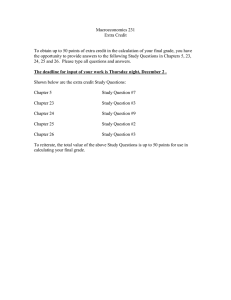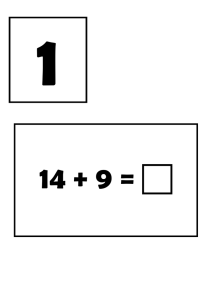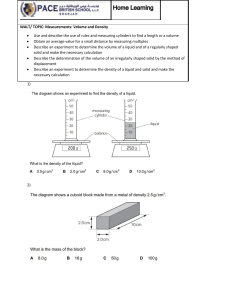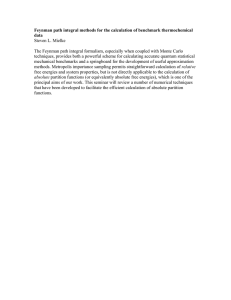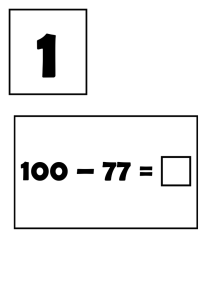Calculating Density Worksheet
advertisement
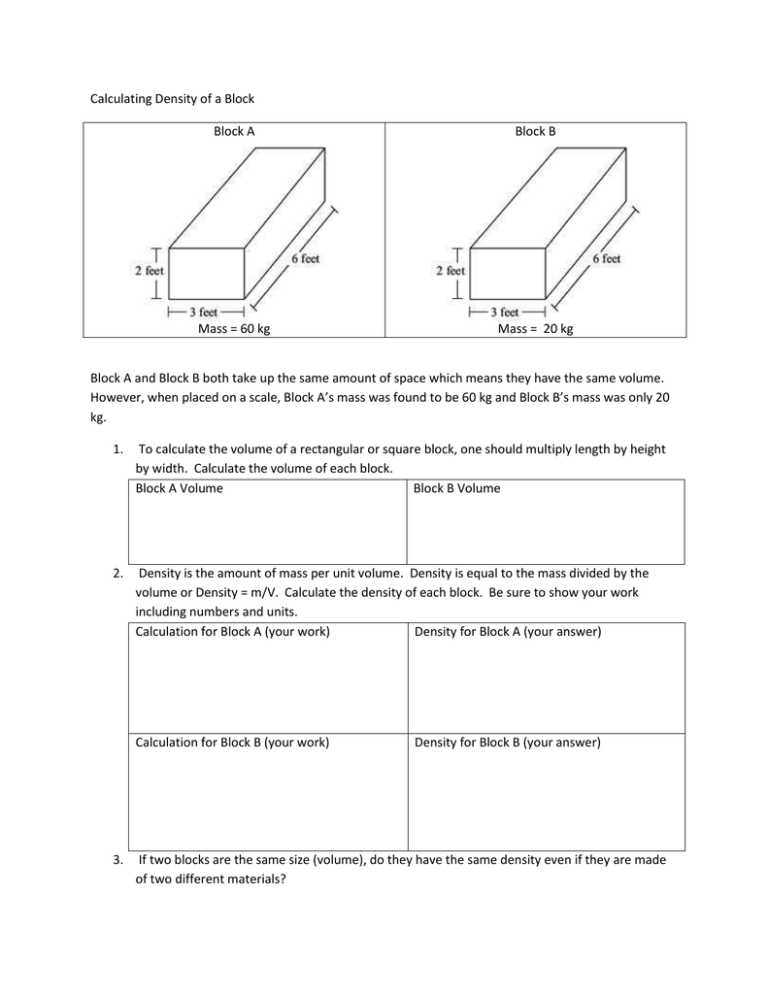
Calculating Density of a Block Block A Block B Mass = 60 kg Mass = 20 kg Block A and Block B both take up the same amount of space which means they have the same volume. However, when placed on a scale, Block A’s mass was found to be 60 kg and Block B’s mass was only 20 kg. 1. To calculate the volume of a rectangular or square block, one should multiply length by height by width. Calculate the volume of each block. Block A Volume Block B Volume 2. Density is the amount of mass per unit volume. Density is equal to the mass divided by the volume or Density = m/V. Calculate the density of each block. Be sure to show your work including numbers and units. Calculation for Block A (your work) Density for Block A (your answer) Calculation for Block B (your work) 3. Density for Block B (your answer) If two blocks are the same size (volume), do they have the same density even if they are made of two different materials? 4. If two blocks have the same mass, do they have the same density even if they are made of two different materials? 5. If two blocks have the same size (volume) and mass, do they have the same density even if they are made of two different materials? 6. If block A were cut in ½, how would this affect the density? A. Not at all because the mass is cut in ½ and so is the volume. B. The density would be less because the mass is less. C. The density would be more because the volume is less.
